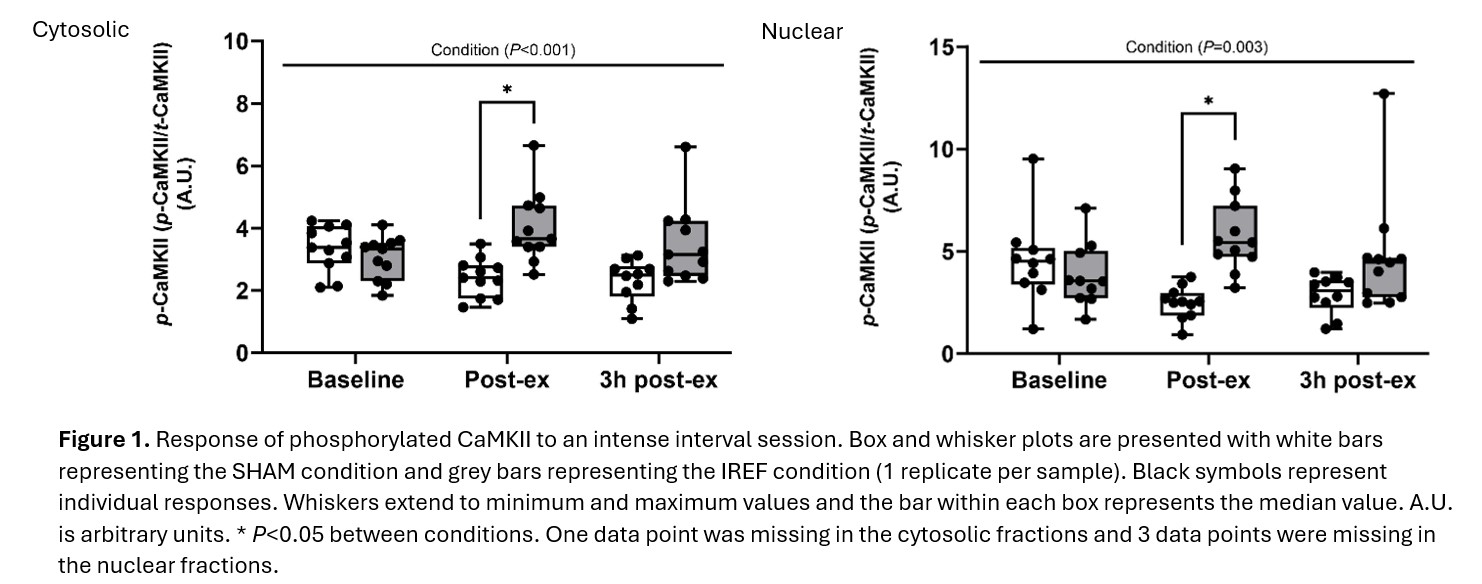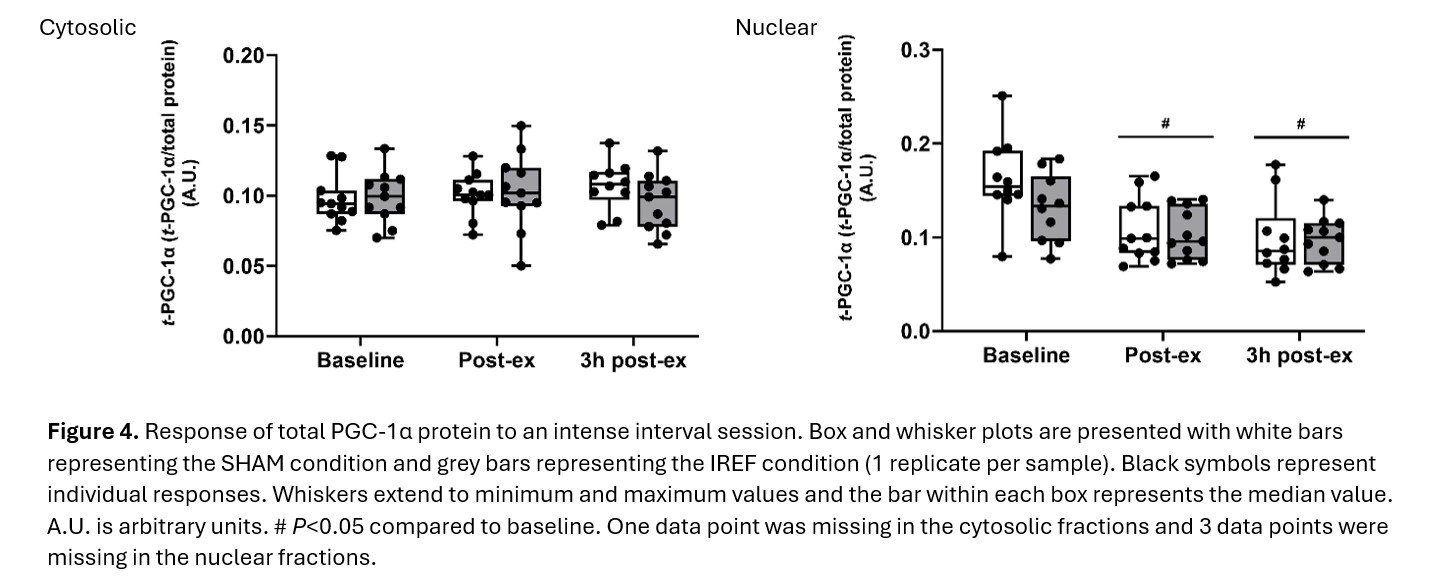INTRODUCTION
Exercise activates molecular signalling pathways involved in mitochondrial biogenesis. Phosphorylation and nuclear translocation of Ca2+/Calmodulin (CaM)-dependant kinase II (CaMKII), p38 mitogen-activated protein kinase (MAPK), and AMP-activated protein kinase (AMPK) (1) activate peroxisome proliferator-activated receptor-gamma coactivator (PGC)-1alpha (PGC-1α), that consequently undergoes nuclear translocation (2).
Infrared (IR) radiation, via IR emitting lamps, has been shown to phosphorylate CaMKII in bovine aortic endothelial cells (3) and p38 MAPK and AMPK in C2C12 cells (4) suggesting that IR could be involved in augmenting adaptive cell signalling processes. KYMIRA garments, powered by Celliant, are a novel fabric that re-emit absorbed body heat as IR, allowing more practical IR delivery that can be worn during exercise. Whilst the molecular signalling pathways can be activated in vitro by IR, whether such findings translate to human skeletal muscle during exercise is unknown.
We tested the hypothesis that KYMIRA IR emitting fabric would activate key mitochondrial signalling pathways in humans following high intensity interval exercise.
METHODS
Eleven recreationally active males (age: 22 ± 4 yrs; height: 171.8 ± 4.6 cm; body mass: 68.8 ± 5.4 kg; O2peak 48.0 ± 4.6 ml/kg/min) volunteered to participate in this study which received ethical approval in accordance with the Declaration of Helsinki. In a repeated measures counter-balanced design, participants performed cycling interval exercise (10 x 3 minutes at 60%Δ – 60% of the difference between the power at gas exchange threshold and O2peak). Participants wore garments (t-shirt and leggings) either with (IREF) or without (SHAM) IR emitting fabric. Garments were worn for 90-minutes prior to, throughout and for 3h following exercise.
Muscle biopsies were obtained at baseline (before donning the garments), immediately post- and 3h post-exercise. Tissue was analysed by Western blot for cytosolic and nuclear phosphorylated (p-) and total (t-) CaMKII, p38 MAPK, AMPK and t-PGC-1α. p– targets were normalised to t– and t– targets normalised to total protein using a stain free gel. Data were analysed by linear mixed model with Holm-Bonferroni post-hoc tests. Statistical significance was accepted at P<0.05.
RESULTS
p-CaMKII was greater in IREF vs SHAM in both cytosolic (P<0.001) and nuclear (P=0.003) fractions. p-CaMKII was greater in IREF vs SHAM immediately post-exercise in cytosolic (P=0.001) and nuclear (P=0.003) fractions (Figure 1).
p-p38 MAPK increased from baseline to immediately post-exercise in IREF but not SHAM in both cytosolic (P=0.008) and nuclear (P=0.005) fractions (Figure 2).
Cytosolic p-AMPK increased from baseline to immediately post-exercise (P<0.001) and remained elevated at 3h post-exercise (P=0.008). There was, however, no difference between conditions (P=0.149). Nuclear p-AMPK was greater in IREF vs SHAM (P=0.037) (Figure 3).
Cytosolic t-PGC-1α did not change (P>0.05). Nuclear t-PGC-1α decreased from baseline to immediately and 3h post-exercise (P<0.001) (Figure 4).
CONCLUSION
IR exposure using KYMIRA garments during high intensity interval exercise alters the mitochondrial signalling response. However, these did not increase translocation of PGC-1α to the nucleus.




